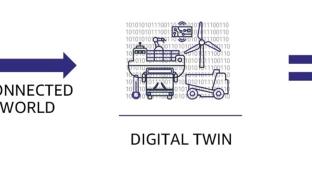Retail Cloud Innovators Series

Five Strategies for Becoming a Data-Driven Retailer
Retailers collect petabytes of data for everything from point-of-sale transactions to inventory levels, customer data, and profit margins. Savvy retailers even collect external information, like social media sentiment and weather forecasts. The immense volume of data can be overwhelming. However, what you do with your data can put you on a success trajectory or leave you languishing in the dust of your competitors.
The more effectively you mine your data with advanced analytics, artificial intelligence (AI), and machine learning (ML), the more you can optimize processes and improve decision making across your organization—in IT and finance for sure, but also in product management, user experience, marketing, supply chain, and logistics. For example, with data insights, retailers can finetune marketing budget allocations, optimize SEO and SEM activities, improve customer conversions, implement product promotions, adjust product assortment and pricing, and prioritize the product development roadmap.
Simply put, with analytics, AI, and ML, your retail organization can become a data-driven company. Here are five key strategies to turn your data into a valuable asset.
- Create a Data Platform Team
To use data effectively, someone in your organization needs to own the capabilities that enable all the data-related use cases. By this I mean, you should establish a dedicated platform team that’s responsible for creating and managing the data systems and providing user support and training. The team should institute policies to manage security, access, and accuracy. It should also provide services for people to easily consume the data with standard reports, dashboards, and visualization tools. For data engineers and developers, it should provide self-service, real-time integration capabilities.
- Implement a Data Lake
A data lake is a centralized repository that stores all structured and unstructured data at any scale. It’s also the foundation for an enterprise-wide data analytics strategy. In a data lake, you can start by storing data in its pristine form. Later you can enhance, clean, or transform the data and run different types of analytics with dashboards and visualizations for big data processing, real-time analytics, and ML-based decisions.
Without getting into too much technical detail, a retail data lake should have these key components:
- Ingestion layer—with a set of purpose-built services to import data from a variety of sources, such as operational, transactional, social media, and third-party data, whether relational or NoSQL.
- Processing layer—to create or orchestrate multi-step data processing pipelines to catalog, validate, clean, and transform datasets that advance through different zones in the storage layer.
- Storage layer—to provide durable, scalable, secure, and cost-efficient storage for vast quantities of data, including raw data; cleaned, validated, and normalized data; and curated, consumption-ready cataloged data.
- Cataloging and governance layer—to protect data in the storage layer and processing resources in all the other layers and to provide mechanisms for access control, encryption, usage monitoring, cataloging, and auditing.
- Analytics consumption layer—for interactive SQL, business intelligence dashboards, and batch processing.
- Expose Self-service Analytics
Data lakes allow various types of employees in your organization, like data scientists, developers, and business analysts, to access data with their choice of analytic tools and frameworks. They allow you to run analytics without the need to move your data to a separate analytics system. With a self-service, scalable platform that enables quick discovery of relevant data, your employees will be able to extract meaningful insights quicker and make more data-driven decisions.
- Automate Decision Making with AI and ML
With AI and ML-based analytics services, you can automate a wide range of routine decision making to speed and improve business outcomes for things like replenishing inventory to avoid stockouts. Additionally, with AI and ML-based analytics services, retailers can build applications to improve workflows. For example, an ML-based personalization application can automatically recommend products to encourage add-on sales that correspond to online shopping patterns. Retailers can also use ML-based demand forecasting to optimize stock levels and improve profit margins. Highly sophisticated retailers that already use data to manage their business can work with data scientists to apply their own models and algorithms to develop, prepare, build, train, and deploy high-quality ML-application models.
- Use ML to Enhance E-commerce Customer Experiences
In e-commerce systems, retailers can use ML to personalize the user interface, make product recommendations, predict demand and segmentation, and for contact center chat bots and post-call analytics.
Data is the new frontier in the highly competitive retail landscape. By effectively analyzing your company data and applying AI and ML, your retail data can provide the insights needed to improve processes, enhance decision making, predict business needs and customer behaviors, as well as drive actions to improve business outcomes. To learn more about the importance of analytics, AI, and ML and to understand how these concepts play a role in effective e-commerce architectures, download The CTO Guide to Ecommerce Architectures.



_179b9.jpg)


